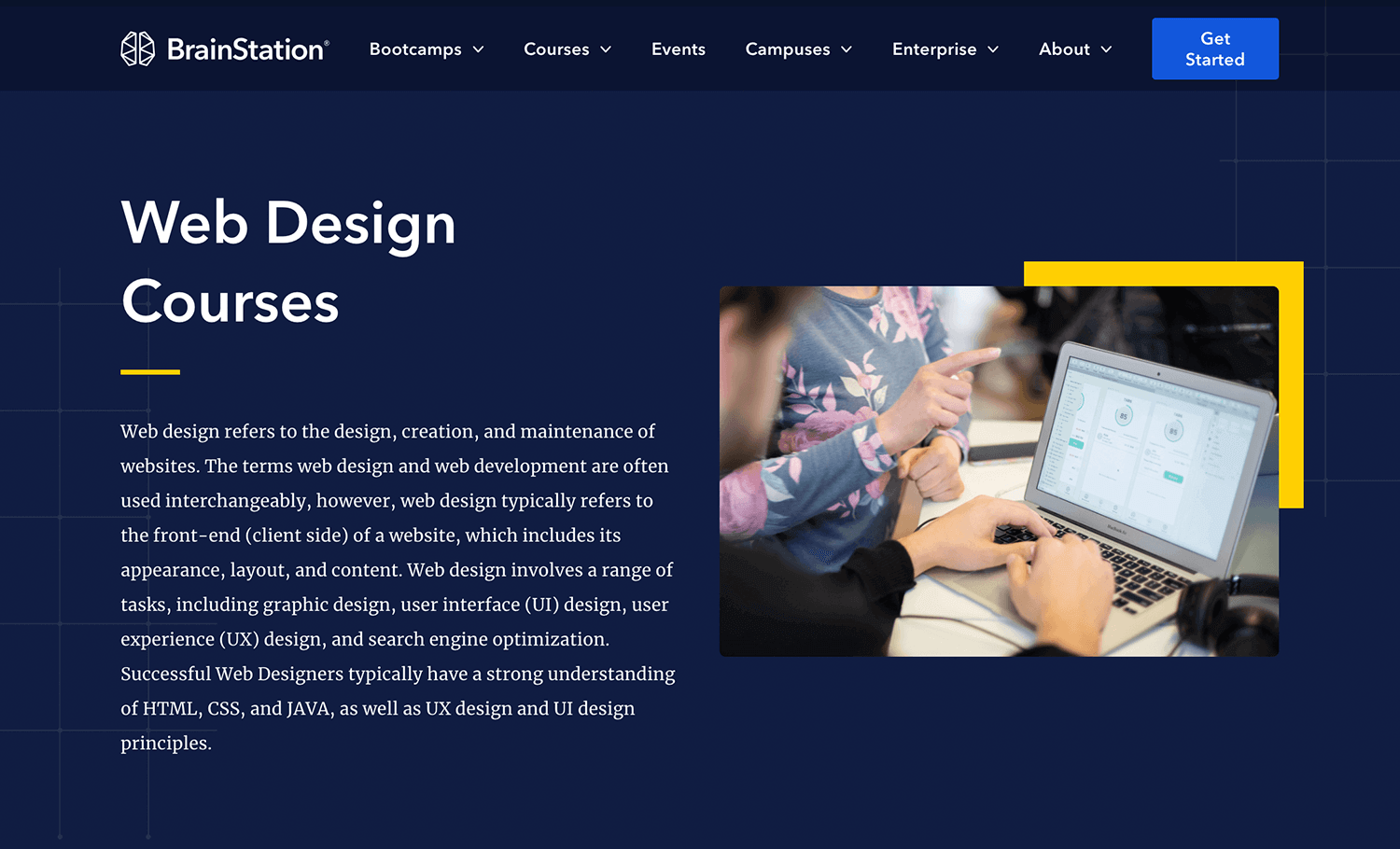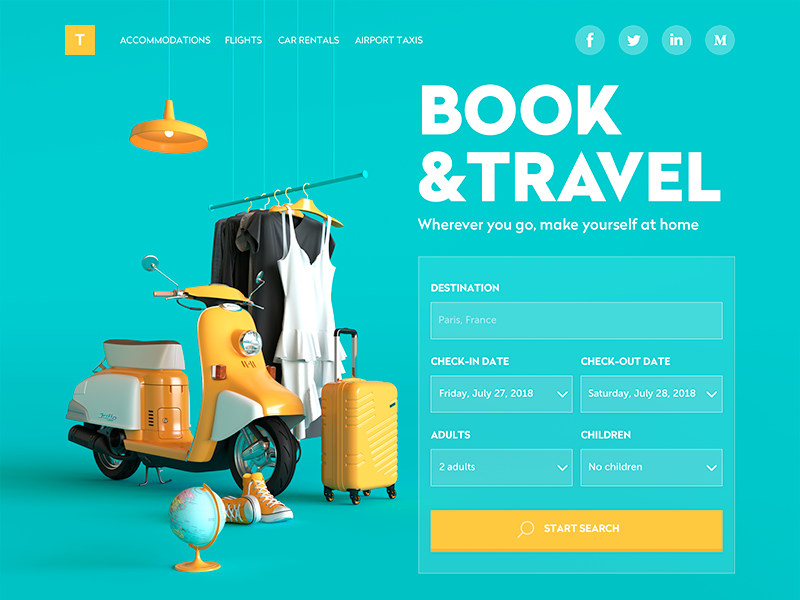How to Properly Integrate Visual Appeals and Capability in Website Design
When developing a site, you require to strike an equilibrium in between visual appeals and capability. It's not practically looking great; your design must additionally serve a purpose and overview users effectively. By focusing on simpleness and instinctive navigating, you can develop an appealing experience. However what aspects really boost use while keeping visual charm? Allow's explore the essential concepts that can result in a harmonious mix of beauty and function.
Recognizing the Importance of Looks and Performance
Recognizing the equilibrium in between aesthetic appeals and capability is essential for producing an effective customer experience when you create a site. A visually enticing website grabs focus, however it's the capability that maintains customers engaged. Site visitors will rapidly lose interest and leave.Consider your target audience and what draws them in if your website looks fantastic however is tough to navigate. You desire to produce a layout that shows your brand while making certain convenience of use. Streamlined layouts, user-friendly navigation, and clear contact us to action can boost both appearances and capability.

Principles of Efficient Internet Style
To develop an efficient web style, you need to adhere to a number of key concepts that boost both individual experience and aesthetic allure. Initially, prioritize simpleness; a clean layout aids customers navigate quickly. Utilize a consistent color design and typography to keep comprehensibility throughout your site. This fosters knowledge and trust.Next, assure your layout is receptive. Individuals accessibility sites on various tools, so your design should adapt effortlessly. Focus on visual power structure; emphasize crucial aspects with placement, shade, or size to assist customers' focus.Finally, integrate adequate white space. It avoids mess and makes content a lot more absorbable. Keep in mind, reliable website design balances aesthetics and performance, so every design option ought to serve an objective. By complying with these concepts, you'll develop a website that's not just aesthetically appealing however likewise user-friendly, eventually keeping visitors involved and urging them to return.
Focusing On User Experience
When prioritizing customer experience, you'll wish to start by understanding what your individuals truly require. Simplifying navigation design can make a huge distinction in just how conveniently they discover what they're looking for. Enhancing visual pecking order assists guide their interest to the most important aspects on your website.
Comprehending Individual Demands
Understanding individual requirements is essential for developing an engaging internet experience that maintains site visitors returning. To achieve this, you should identify the goals and preferences of your target market. Start by carrying out customer study, like meetings or studies, to gather insights on what users worth most. When connecting with similar websites, pay interest to their pain points and difficulties. This information permits you to tailor your layout, making certain functionality straightens with individual expectations. Additionally, think about producing individual personalities that stand for various sectors of your target market, helping you envision their needs during the layout procedure. When you prioritize comprehending user needs, you develop an internet site that not just looks great yet likewise delivers a smooth, enjoyable experience that cultivates commitment.
Simplifying Navigation Design

Enhancing Visual Hierarchy
A solid visual power structure is vital in guiding individuals with your web site and ensuring they involve with vital content. To achieve this, use shade, dimension, and spacing purposefully. Make essential components like headings larger and bolder than body message, drawing interest instantly. Make use of contrasting colors to highlight phone call to activity, urging clicks. In addition, employ sufficient white room to separate sections, making content digestible and inviting.Consider the circulation of information; arrange elements rationally, leading users' eyes from one indicate the following. Usage aesthetic signs, like arrows or lines, to direct interest. By prioritizing aesthetic power structure, you improve individual experience and enhance the probability of conversions, ensuring your site is both aesthetically pleasing and functionally effective.
Shade Concept and Its Effect on Use
While choosing the right shades for your website might look like a small information, it greatly affects usability and individual experience. Color influences how users perceive information and can enhance or impede navigation. For circumstances, contrasting shades can assist vital elements attract attention, making it much easier for site visitors to find what they need.Additionally, take into consideration the psychology of shades: blue usually influences depend on, while red develops seriousness. Understanding your target audience can assist your shade selections, assuring they resonate well.Moreover, regular color plans assist construct brand identity, making your web site a lot more unforgettable. Nevertheless, beware-- a lot of colors can overwhelm users. Stick to a minimal scheme that matches your material and keeps clarity.Incorporating accessibility is also vital; confirm your shade mixes are friendly for those with visual problems. By attentively applying shade concept, you'll enhance use and produce a more appealing customer experience.
Typography: Harmonizing Style and Readability
Shade choices established the phase for your site, yet typography plays an equally crucial function in boosting individual experience. You desire your message to interact clearly while also mirroring your brand's individuality. Beginning by selecting typefaces that are not just appealing however additionally understandable. Sans-serif fonts frequently function well for electronic displays, as they're less complicated to read at various sizes.Maintain a hierarchy by utilizing various font style sizes and weights; this guides users with your web content effortlessly. Take into consideration line spacing and letter spacing; too tight can frustrate visitors, while also loose can interfere with the flow. Restriction your font style options to two or three to keep the layout cohesive.Finally, always evaluate your typography across various gadgets and web browsers. What looks excellent on one screen may out another. Balancing design with readability guarantees that your message reverberates, keeping your target market engaged and educated.
Responsive Layout: Making Visual Appeals Work With All Devices
To ensure your site looks excellent on any kind of gadget, you'll need to embrace receptive style concepts. This approach warranties your site adapts to different display dimensions, offering an optimal customer experience. Beginning by making use of liquid grids and versatile images that scale effortlessly. As opposed to dealt with measurements, choose percents and loved one systems, enabling your layout to adjust dynamically.Next, implement media inquiries in your CSS. These let you use different styles based upon gadget characteristics, like display width. This means, you can keep visual charm while ensuring functionality.Don' t ignore touch targets; make specific switches and web links are very easy to tap on smaller sized screens. Focus on vital content, so customers can conveniently navigate your website despite their tool. By concentrating on these elements, you'll develop an engaging, visually appealing experience that satisfies the needs of all individuals, whether they're on a tablet, desktop, or smartphone .
Carrying Out Use Testing for Constant Improvement
To improve your website design, you need to establish clear functionality objectives that line up with customer demands. By carrying out customer tests, you can collect valuable responses on how real people communicate with your website. Assessing these outcomes will help you make notified improvements and create a much more effective user experience.
Defining Functionality Goals
While aesthetic appeals can attract customers in, defining use objectives is important for ensuring their experience remains gratifying and smooth. Start by identifying what you want individuals to achieve on your website (website design london Ontario). Consider their needs, jobs, and behaviors. Are they trying to find information, making an acquisition, or authorizing up for a newsletter? Develop clear benchmarks to gauge success, like job conclusion prices or time on task. Prioritize instinctive navigating, obtainable material, and responsive layout to boost usability. Regularly review these objectives as individual expectations develop. By specifying use objectives, you produce a framework for examining and boosting your internet site's efficiency. This focus on usability not only boosts individual satisfaction yet likewise enhances the total performance of your design
Performing User Tests
Carrying out user examinations is crucial for refining your internet site and ensuring it fulfills your target market's demands. Start by determining your target customers and developing a test plan that details your purposes. Use a mix of measurable and qualitative methods, such as studies, meetings, and task-based monitorings, to collect extensive responses. Welcome participants to browse your website while you observe their communications and keep in mind any kind of troubles they come across. Motivate open discussion to record their thoughts and feelings regarding the layout and performance. Maintain sessions short and concentrated, guaranteeing you cover crucial areas without overwhelming individuals. Ultimately, make certain to document all searchings for, as this details will be indispensable for making informed style decisions that enhance both aesthetic appeals and use.
Assessing Test Results
Exactly how can you successfully evaluate the outcomes of your functionality examinations to drive continual improvement? Begin by classifying responses right into usual motifs. Search for patterns in customer behavior that highlight discomfort points or areas for enhancement. Use quantitative information, like job conclusion rates and time on task, to determine usability fairly. Do not neglect to take right into account qualitative understandings from customer remarks; they frequently disclose underlying issues that numbers can not show. Prioritize the most impactful findings and create workable things for your design group. Remember, it has to do with iterating-- apply modifications, after that examination once more. This cycle of screening, analyzing, and refining assists you balance looks and performance, ensuring your website satisfies customer demands properly while maintaining visual charm.
Regularly Asked Concerns
Just how Do I Pick the Right Shade Scheme for My Website?
To pick the ideal color combination for your internet site, consider your brand's individuality, target audience, and emotional impact (website design london Ontario). Use color psychology, create consistency, and guarantee readability. Test combinations to see what resonates finest with visitors
What Devices Can Aid With Web Design Visual Appeals and Performance?
You can utilize devices like Adobe XD, Figma, and Lay out to enhance your website design's aesthetics and performance. These systems use intuitive user interfaces, partnership attributes, and pre-made themes to improve your creative procedure and boost your designs.
How Can I Include Animations Without Compromising Capability?
To integrate computer animations without jeopardizing functionality, focus on refined impacts that boost customer experience. Usage CSS computer animations for smoother interactions, assurance fast tons times, and examination on numerous tools read more to maintain efficiency while adding aesthetic charm.
What Prevail Errors to Stay Clear Of in Web Design Looks?
When developing, avoid messy formats, poor shade choices, and inconsistent font styles. Don't overlook mobile responsiveness, as it can push away users. Confirm your layout straightens with your brand name, producing a seamless experience that involves site visitors efficiently.
How Commonly Should I Update My Site's Layout for Optimum Visual Appeals?
You ought to upgrade your site's design every 1-2 years to maintain up with trends and keep ideal aesthetic appeals. Frequently renewing visuals helps involve guarantees and visitors your site continues to be user-friendly and enticing. When you make a web site, understanding the equilibrium in between visual appeals and functionality is vital for producing an effective customer experience. To create a reliable web style, you require to stick to numerous key principles that enhance both customer experience and aesthetic charm. Customers access sites on different devices, so your layout ought to adapt perfectly. When prioritizing customer experience, you'll want to begin by recognizing what your users truly require. Start by carrying out individual study, like interviews or studies, to gather understandings on what customers worth most.